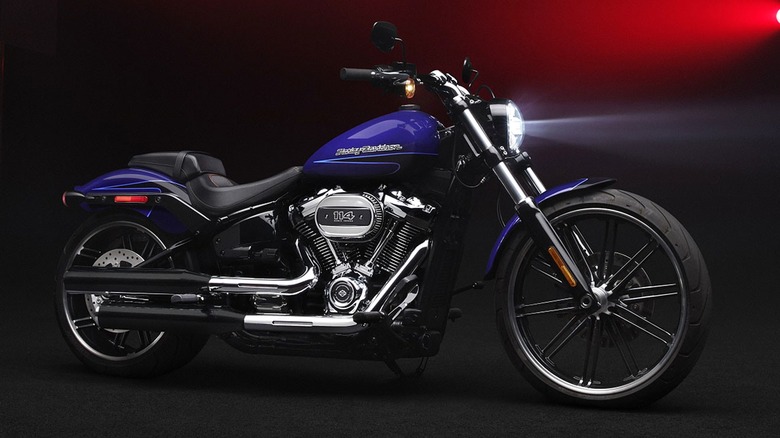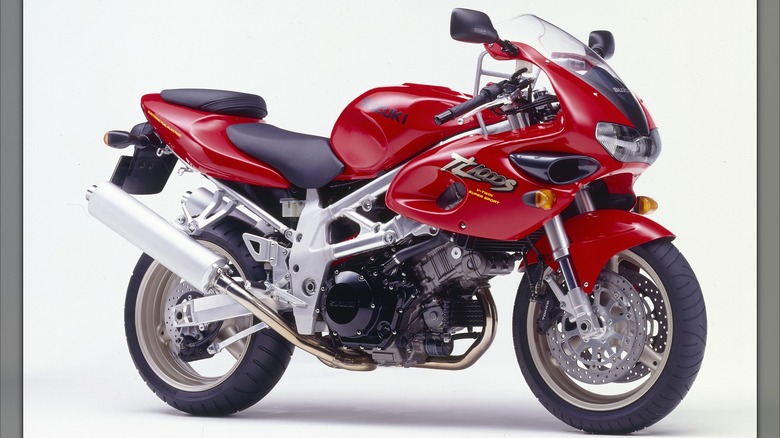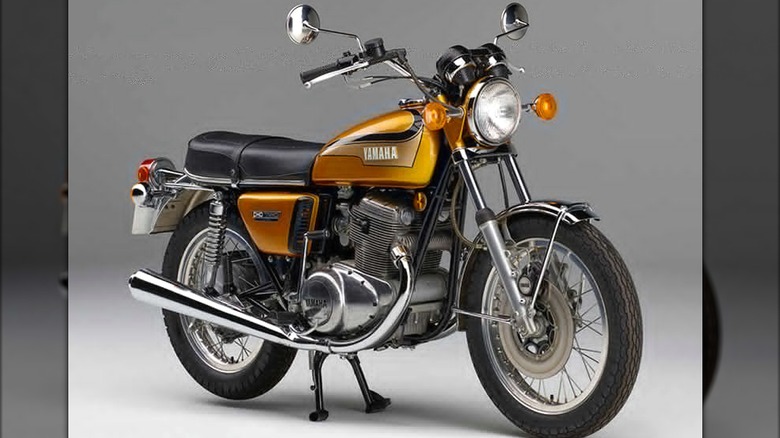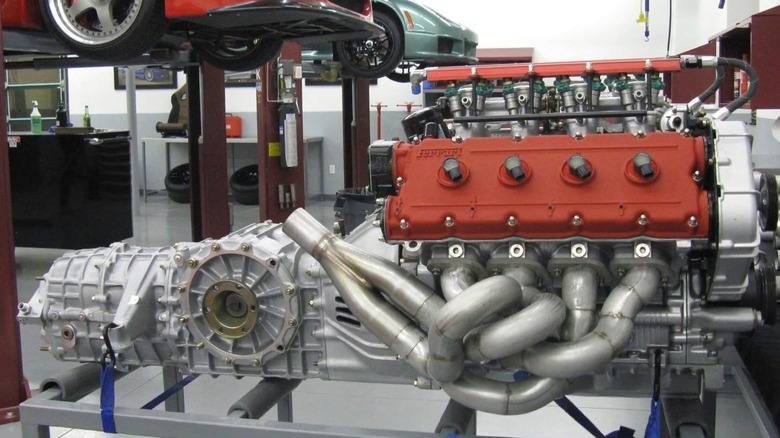5 Of The Worst Motorcycle Engines Ever Made
Every motorcycle engine tells a story. Some are remembered for their smooth power, bulletproof reliability, and the way they make a rider feel connected to their bike. Others, though, were remembered for all the wrong reasons.
When a motorcycle engine goes wrong, it doesn't just leave you stranded. It shakes your trust, drains your wallet, and makes every mile feel like a gamble. One moment, you're drawn in by the look, the specs, or the promise of something exciting; the next, you are staring at an oil leak, a failing cam chain, or a heat problem that keeps coming back no matter what you fix.
What makes these cases even more interesting is that none of these engines was intended to fail. Most launched with ambitions, whether that meant introducing great ideas, delivering smoother power, or pushing their brands into the next era. And truth be told, every manufacturer, no matter how respected, has had one of those moments. These engines all arrived looking like the future, geared toward progress and innovation. Once real riders put them on the road, the weak points surfaced quickly. Manufacturing shortcuts, unproven designs, and rushed development cycles turned those promises into ongoing headaches. That mix of high hopes and harsh reality is exactly what earned the five motorcycle engines below their lasting reputations, the kind that riders and mechanics still talk about today.
Harley-Davidson Milwaukee-Eight 114
If you've ever spent time around Harley-Davidson riders, you probably should have heard mixed opinions about the Milwaukee-Eight 114. Introduced in 2017 for touring models, this ninth-generation engine took over from the old Twin Cam and delivered improved power, throttle response, and heat control. It packs about 1,870 cc into Harley's familiar 45-degree V-twin layout, with a single chain-driven cam, eight valves, and double spark plugs, which then powers about 124 lb-ft of torque at roughly 3,250 rpm. In theory, it should have been everything Harley riders wanted, but once you start living with it, the cracks begin to show.
The Milwaukee-Eight 114 is notorious for problems like oil sumping, leaks, overheating, and vibration at higher speeds. If you own a model from like 2017 to 2019, there's a great chance that you've battled with oil sumping caused by a faulty pump that fails to pull excess oil out of the crankcase. When that happens, the engine can run rough, lose power, or puff out black soot. Add in clutch contamination, stiff shifting, and noise with growing mileage, and you have even more reasons to swap out the entire engine.
Even heat management, one of Harley's big promises, didn't quite live up to expectations. Poor sealing and radiator clogging can raise friction and temperature fast that even the counter-balancers struggle to keep vibration under control on long rides. If you're maintaining one yourself, regular oil checks, gasket inspections, and radiator cleaning aren't optional because they're what keep the engine alive.
Suzuki TL1000S' V-twin
Back in the late '90s, the Suzuki TL1000S made waves in the sportbike world for all the wrong reasons. When it hit the market in 1997, Suzuki wanted to challenge Ducati's V-twin dominance with a 996 cc 90-degree engine that pumped out an impressive 111.5 horsepower and up to 76.3 lb-ft of torque at 8,000 rpm. It sounded promising, especially for riders craving something raw and powerful wrapped in a lightweight trellis frame.
The TL1000S felt eager and untamed, responding to every twist of the throttle with a rush that few bikes of its time could rival. That thrill came at a cost. Beneath that excitement were a host of engine and handling problems that quickly gave it the reputation it was known for in its time. Owners struggled with a flawed rotary rear damper that made handling twitchy and, at times, flat-out dangerous. It wasn't long before they started giving it names of their own. Some called it the "Tank Slapper." Others referred to it as the more ominous "Widow Maker."
After 1998, Suzuki tried to calm things down by programming the ECU to delay ignition timing in the lower three gears. The tweak tamed some of the chaos but sapped performance instead of solving the real problem. As complaints piled up and lawsuits loomed, Suzuki was eventually forced to issue a recall. The revisions brought dampers and internal upgrades, but it was too late. After a short four-year run, Suzuki pulled the plug in 2002.
Yamaha TX750's Twin
When Yamaha unveiled the TX750 in the early 1970s, it was meant to be a statement piece — a shot at dethroning the big British twins with a smoother and more refined engine. The 743 cc parallel-twin engine promised modern engineering and vibration-free performance in an era when most bikes still rattled and leaked. Yamaha's answer was the "Omni-Phase" balancer system, using dual counter-rotating shafts to tame vibration, and then paired it with a dry-sump lubrication setup designed to keep the engine cool and consistent.
Around 63 horsepower and a torque of 51 lb-ft, the TX750 churned out a respectable performance which ran through a carried-over five-speed gearbox and a chain drive. This sounds like a technical triumph, but if you had owned one back then, the reality would've been very different. Its models then were plagued with severe oil scavenging problems, overheating, and cam-chain failures that led to severe mechanical damage. Ironically, the very balance system meant to make the ride smoother ended up disrupting oil circulation, starving critical components. The problem came to a head during a Castrol race weekend in Australia, where it broke down and embarrassed Yamaha on a global stage in 1972.
In the aftermath, Yamaha scrambled to fix things, issuing several technical updates and releasing the TX750A in 1974. Still, that wasn't enough. In 1975, Yamaha quietly ended its production. Today, the TX750's engine is remembered less as a collectible and more as one of the most complicated bike engines in history.
Bimota V-Due 500
When the Bimota V-Due 500 debuted in 1997, the small Rimini-based company wanted to prove it could do more than just wrap other manufacturers' engines in beautiful frames. This time, Bimota built its own powerplant – a 500cc two-stroke V-twin with direct fuel injection, the first of its kind on a production bike. The concept was daring, and at first, it looked promising. Ferrari engineers even helped in fine-tuning the high-flow injectors, which produced around 97.8 horsepower and 57 lb-ft of torque at 9,000 rpm when paired with a six-speed chain drive.
Then reality came. Riders soon discovered that the engine's fuel-injection system was deeply flawed, often causing misfires, erratic throttle response, and even engine seizures. You'd twist the throttle and never quite know what might happen next. What was meant to make the V-Due groundbreaking, made it a nightmare. Bimota later tried switching to carburetors in the Evoluzione version, but it was a little too late for that. Even though the bike was certified in up to 50 U.S. states, the problems were so severe that Bimota had no choice but to reclaim back about 150 units from frustrated owners before the 1999 recall. Later, a small batch of 26 race-only Corsa units followed. Those, too, struggled with crank seal leaks and crankshaft failures.
When Bimota got broke that same year, Engineer Piero Caronni stepped in to salvage what was left. He bought the leftover stock and parts, fixing many of their flaws, but the V-Due's reputation had already been written.
Harley-Davidson Twin Cam 88
If you've ever spotted a "Twin Cam 88" badge on a Harley, then it is worth knowing that you're looking at one of the brand's most controversial engines. When it launched in 1999, the Twin Cam 88 was supposed to move Harley past the old Evolution engine with more power, torque, and refinement. With its 1,450cc V-twin layout, dual chain-driven camshafts, and a direct-mounted transmission, it looked like a solid long-term upgrade on the surface. Once the miles started adding up, owners learned the hard way that this engine wasn't quite the bulletproof beast Harley claimed it to be.
If you owned an early model between 1999 and 2002, you likely heard—or worse, experienced—about the fragile plastic cam-chain tensioner. As the plastic aged, bits would flake off and travel down the oiling system, starving the pump and setting the engine up for serious trouble. That's just one part of the story. Oil circulation issues was another big one, since weak scavenge performance often led to overheating and, in severe cases, internal failures under heavy load.
Leaks were another headache. Riders reported oil seeping from rocker-box and base gaskets, while crankshaft run-out created vibration problems in bikes that used the rigid mount system. Transmission complaints showed up too, as clunky shifts, false neutrals, and premature wear turned simple rides into expensive repairs. Harley eventually addressed many of these flaws by the mid-2000s, swapping in stronger hydraulic tensioners and refining the oil system, but the damage to the Twin Cam's reputation had already stuck.
Methodology
To pinpoint five motorcycle engines that truly earned their bad reputations, the focus went beyond internet chatter or isolated complaints. Each engine was selected after reviewing long-term ownership data, recall records, reliability surveys, and testing archives from reputable sources, including MCN, BikeSocial, RideApart, and Motorcycle News. Owner forums and mechanic reports also provided firsthand accounts of how these engines performed once the showroom shine wore off.
The engines chosen didn't just have minor flaws or quirks. They showed consistent and widespread issues that affected performance, reliability, or safety over time. Problems such as oiling failures, overheating, cam chain tensioner breakdowns, and high maintenance costs were key factors. Each model was evaluated within its own class and production era to ensure fair comparisons. A high-strung sportbike engine, for instance, was judged differently from a long-haul cruiser twin. The aim was not to take shots at manufacturers but to understand how certain designs went wrong, why they failed, and what lessons they left behind for the rest of the industry.






